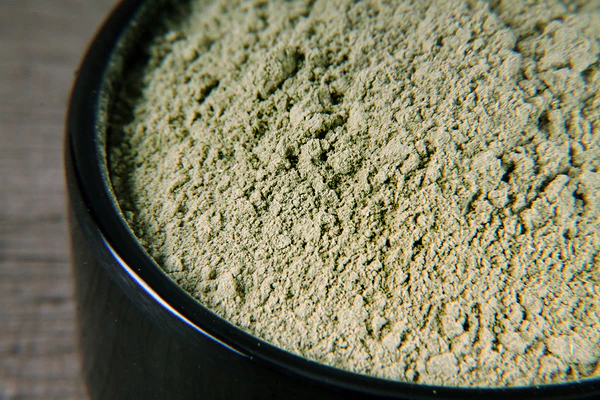Kratom powder is becoming somewhat well-known as a natural pain reliever. Originally derived from the leaves of the native Mitragyna speciosa tree found in Southeast Asia, kratom has long been used medicinally. People looking for relief from chronic pain and suffering have lately resorted to kratom powder as a safer alternative than traditional painkillers. Kratom powder is a versatile option that can be mixed with drinks or taken on its own. This post looks into kratom powder’s uses, advantages, and safe dosages as well as how to manage pain with it.
Kratom’s Mechanisms for Pain Relief
Active substances known as alkaloids—mostly mitragynine and 7-hydroxymitragyne—which interact with the body’s opioid receptors abound in kratom powder. The alkaloids in kratom help to reduce pain. Although kratom attaches to similar receptors and offers pain relief without the extreme drowsiness connected with stronger pharmaceutical medicines, it does not have the same addictive power as traditional opioids. Because they contain more 7-hydroxymitragynine, red vein kratom strains are especially appropriate for pain management. Offering a more natural way to manage discomfort, these strains are well-known for helping with chronic pain disorders including back discomfort, fibromyalgia, and arthritis.
Kratom powder’s advantages for pain management
Natural nature of kratom powder is one of its main benefits for pain management. Kratom powder is plant-based and minimally processed unlike synthetic painkillers, which could have a variety of adverse effects. For people seeking more natural-based alternative therapies, this makes it a tempting choice. Still another advantage of kratom powder is its adaptability. It can be combined into beverages, drank as tea, or even packed for simpler access. This adaptability lets consumers fit their dosage and consumption approach to their taste and way of life.

Selecting a Kratom Strain Appropriate for Pain Management
Choosing the correct strain is absolutely vital when taking kratom powder to treat pain. Red vein strains have sedative and analgesic qualities, which makes them the most successful for relieving pain as was already discussed. Among the most often used strains to help with pain are Red Bali, Red Borneo, and Red Maeng Da. Though they often are less sedative and more energetic than red strains, green vein strains can also help with pain. Suitable for daytime use, Green Malay and Green Borneo are strains that balance mild stimulation with pain alleviation.
Kratom powder offers a promising natural alternative for managing pain, especially for those who want to avoid the side effects of pharmaceutical medications. For those with chronic pain, its adaptability, cost, and strong pain-relieving qualities appeal. By choosing the right strain, using kratom powder safely, and managing dosage carefully, users can experience the benefits of this plant-based solution for pain management. Many people prefer kratom powder for its ease of use and ability to be tailored to individual doses.






